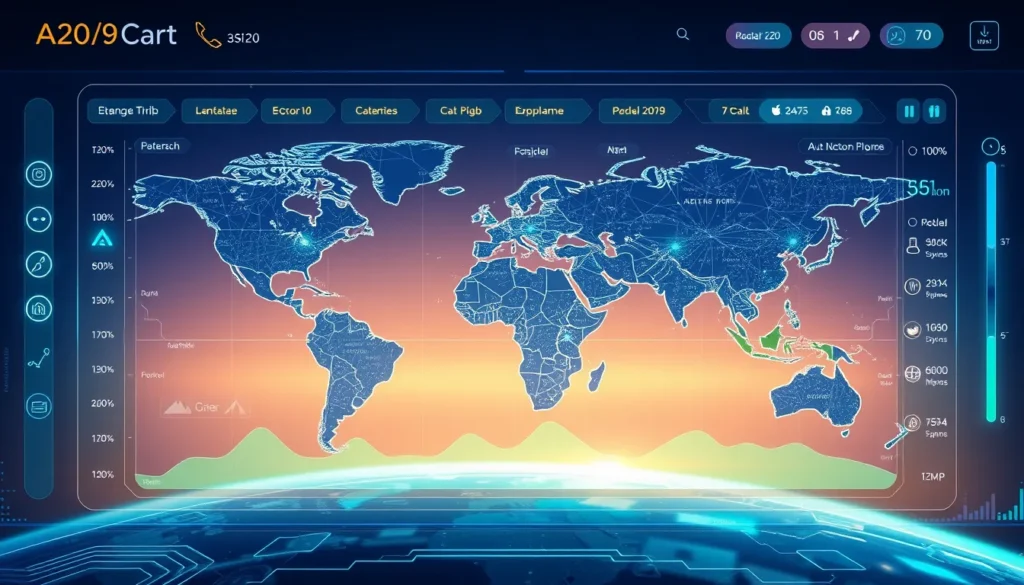Now Reading: Next-Gen Edge AI Robotics: Advanced IoT Integration
-
01
Next-Gen Edge AI Robotics: Advanced IoT Integration
Next-Gen Edge AI Robotics: Advanced IoT Integration

Next-Gen Edge AI Robotics: Advanced IoT Integration
Introduction
The evolving realm of smart technology is being revolutionized by breakthroughs in IoT platform integration and cutting-edge edge AI robotics. ASUS, a pioneer in IoT innovation, has joined forces with NVIDIA, whose powerful edge AI solutions are transforming processing capabilities. This strategic alliance is driving next-generation edge AI robotics that redefine speed, intelligence, and efficiency in industries ranging from manufacturing and logistics to smart cities and healthcare.
What is Edge AI Robotics?
Edge AI robotics refers to robotic systems that incorporate artificial intelligence capabilities directly at the data source, without the need for constant cloud connectivity. By leveraging advanced processing at the edge, these systems can make intelligent decisions rapidly, benefitting from reduced latency and improved operational reliability. This innovation is at the core of next-generation robotics, enabling real-time decision-making and enhanced automation.
ASUS and NVIDIA: A Strategic Collaboration
In a bold move, ASUS has integrated NVIDIA’s state-of-the-art technology into its IoT platform. This integration delivers unmatched hardware acceleration in smart robotics and brings several advantages:
- Advanced Processing Capabilities: Utilizing NVIDIA edge AI ensures faster data handling and processing directly on smart devices.
- Reduced Latency: By shifting AI capabilities closer to the data source, the system markedly reduces latency in robotics operations.
- Intelligent Robotics Systems: Enhanced with real-time processing, these systems can navigate complex environments and execute adaptive control strategies effectively.
For more details on the companies behind these innovations, visit the official websites of ASUS and NVIDIA.
Innovation in Next-Generation Edge AI Robotics
The collaboration between ASUS and NVIDIA is pushing the limits of what is achievable in edge AI robotics. This new generation of robots combines robust processing power with state-of-the-art intelligence to meet the growing demands of modern industries. Key features include:
- Next-Generation Edge AI Robotics: Integrating cutting-edge sensors and smart algorithms for greater operational efficiency.
- Real-Time Edge Processing: Ensuring swift, in-the-moment data analysis that significantly enhances decision-making.
- IoT Platform Integration: Seamlessly connecting various devices through a dynamic IoT ecosystem that supports intelligent decision-making.
The system design focuses on the reduction of latency in robotics operations, ensuring that every calculated decision is delivered almost instantaneously. This approach represents a significant improvement over traditional cloud-based AI models, which can suffer from delays in data processing.
Reducing Latency in Robotics Operations
Latency is a critical metric in robotics, particularly in industrial and mission-critical operations. The integration of NVIDIA’s advanced processing capabilities with ASUS’ IoT platform yields a robust solution that minimizes delays. Here are some pivotal benefits:
- Faster Response Times: Immediate data processing at the edge means robots can react in real time to unexpected changes.
- Enhanced Safety: Quick decision-making leads to safer operations in environments where split-second responses are essential.
- Increased Efficiency: Reduced latency translates to smoother workflows and optimized performance, which is crucial for smart manufacturing and logistics.
Intelligent Decision-Making in IoT
Intelligent decision-making is becoming a cornerstone in modern robotics and IoT integration. With the infusion of AI, robotic systems are not just automated; they are capable of learning and adapting. This capability is boosting efficiency in scenarios such as:
- Autonomous Navigation: Robots can plan their routes dynamically in congested areas, enhancing efficiency and safety.
- Predictive Maintenance: Smart AI algorithms anticipate potential failures before they occur, reducing downtime and maintenance costs.
- Real-Time Analytics: By processing data on the spot, businesses can derive actionable insights to improve operational strategies.
Moreover, the application of advanced processing capabilities in IoT paves the path for intelligent robotics systems that continuously evolve, ensuring businesses remain agile and competitive in a rapidly changing technological landscape.
Conclusion
The rise of next-generation edge AI robotics marks a transformative shift in how industries leverage technology. ASUS and NVIDIA’s strategic collaboration exemplifies the future of smart robotics, where reduced latency, enhanced decision-making, and robust IoT platform integration open new horizons for innovation. As these technologies mature, we can expect to see even more breakthroughs in how robots interact with their environments, promising unprecedented improvements in efficiency, safety, and overall performance.
In conclusion, edge AI robotics is not just an advancement in robotics; it is a paradigm shift that merges the best of IoT and artificial intelligence. By embracing this technology, industries can unlock a new level of performance and agility, setting a foundation for a smarter, more responsive future in automation and robotics.

























